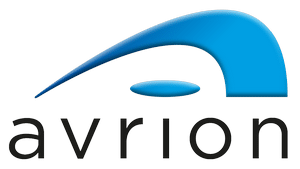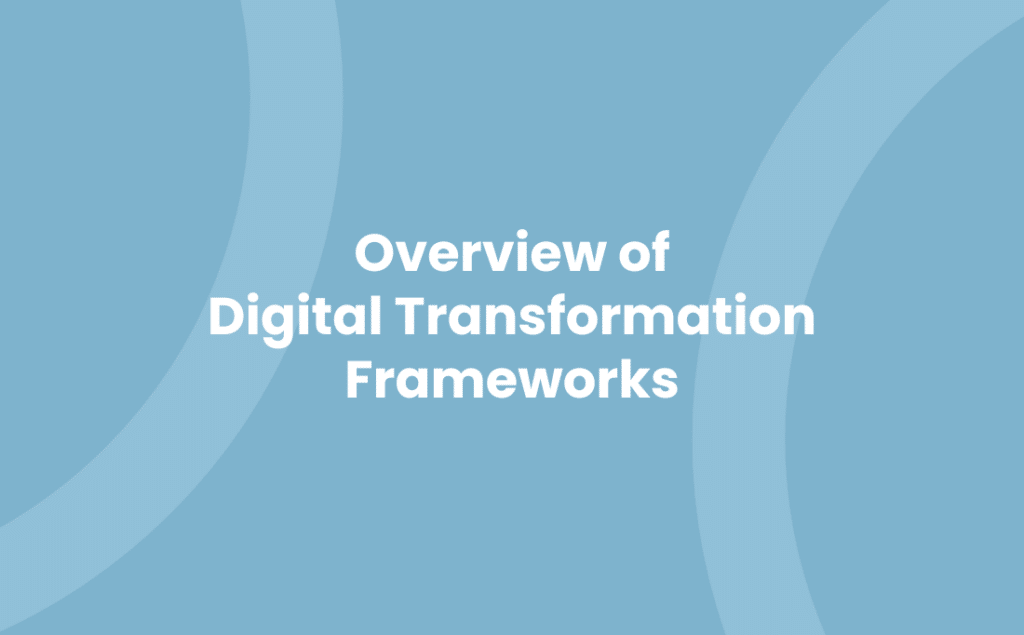In the dynamic world of business, you’ve likely heard the buzz about ‘Digital Transformation frameworks’. But what are they, really? It’s no longer a choice, but a necessity to understand and embrace these frameworks to stay ahead in the game.
These frameworks aren’t just about adopting new technologies. They’re about reimagining your business, reshaping your strategy, and redefining your future. In the next few paragraphs, we’ll delve into the nuts and bolts of Digital Transformation frameworks, and how they can catapult your business to new heights.
Understanding Digital Transformation
Diving deeper into the realm of ‘Digital Transformation frameworks’, first and foremost, it’s vital to grasp what we mean by Digital Transformation. It’s not merely about switching from traditional to digital methods. It’s a radical rethinking of how an organisation uses technology, people, and processes to fundamentally change business performance, says George Westerman, MIT principal research scientist.
Consider this. You don’t just apply new technology on top of current operations. Rather, Digital Transformation requires a thorough examination of business processes, customer needs, and market trends. Post that, you leverage digitisation to meet those needs and enhance your business performance.
Digital frameworks step in here. These structured guidelines aid businesses in navigating the complexities of Digital Transformation. They provide a blueprint for businesses wanting to make the most of this shift.
Don’t think of Digital Transformation frameworks as a one-size-fits-all solution. They’re tailored tools designed to enhance your business. They offer models to identify gaps, strategies to plug those gaps, and methods to maintain progress.
Among many digital frameworks at your disposal, you have the ‘Technology-Driven Change’ and the ‘Strategy-Driven’ models. Both are unique yet intertwined. The Technology-Driven model focuses on adopting new technology to spur change within existing systems. It’s about making operations smoother, efficient, and adaptable in the ever-changing business climate.
In contrast, the Strategy-Driven model sees technology as a tool. Here, the focus is on business vision and strategic goals. This model is about using technology not only to reach these goals but to reshape them.
In a nutshell, understanding Digital Transformation goes beyond figuring out high-tech. It involves recognising the immense potential of digital frameworks in reshaping businesses. It’s the key to not just survive, but thrive in this evolving digital world.
Remember, it’s not a one-off process. It’s a continuous cycle. As market dynamics shift, so too must your strategy. And digital frameworks are your trusted allies in this tasks.
Exploring Digital Transformation Frameworks
After delving into an overview of Digital Transformation and its importance, the time comes to explore these frameworks that act as strategic compasses guiding organisations through the maze of transformation. Frameworks, like ‘Technology-Driven Change’ and ‘Strategy-Driven’, aren’t merely a cure-all solution but serve as navigational aids, identifying gaps in performance and providing direction.
Let’s get started.
Technology-Driven Change
This framework operates on the premise that technology brings change from within an organisation. It predominately aids in identifying technologies that not only innovate processes but also shake up existing organisational structures. Think of it as a spotlight, illuminating avenues for technological improvement and streamlining operations. Aligning an organisation’s technology with its business strategy, it focusses on efficiency and operational improvements.
Strategy-Driven Approach
Adapting to change is one thing. Directing it? That’s a whole different story. The Strategy-Driven approach, as the name suggests, champions the strategy as the puppet master guiding digital transformation. This model focuses on understanding market dynamics, identifying strategic objectives, developing methodologies to reach those objectives, and implementing the technology to facilitate that journey. It’s all about proactivity, not reactivity.
By gaining an in-depth understanding of these digital transformation frameworks, you can select the most fitting for your organisational needs. But remember, a successful transformation is not an end goal; it’s a continuous journey. Every organisation needs a compass during this evolutionary journey, and these frameworks can indeed be that guiding light, enabling you to traverse the ever-adapting landscape of the Digital era.
Analysing Various Digital Transformation Frameworks
When delving deeper into digital transformation frameworks, their diversity becomes apparent. Two such frameworks, ‘Technology-Driven Change’ and ‘Strategy-Driven Approach’, merit a closer scrutiny. Using knowledge from avrion.co.uk, their contrasting approaches showcase the adaptability of digital transformation.
Firstly, probe the ‘Technology-Driven Change’ scope. Centering on technology as a catalyst, this framework revolutionises internal operations. Take, for example, a small retail business. With the implementation of enough digital tools, you might see website upgrades, automated supply chains, and improved customer interaction, hence catapulting the company’s performance.
Next, switch your focus to the ‘Strategy-Driven’ approach. This direction signifies a mental shift more than a technological one. You essentially alter your business strategy to augment digital usage. Going back to the retail business example, you might witness a shift from brick-and-mortar to primarily online trading. Here we see less of physical technology alterations, and more strategy rejigs.
Despite sharing the same aim of digital optimisation, each framework follows distinct pathways. The ‘Technology-Driven Change’ zeroes in on technological fine-tuning. On the other hand, the ‘Strategy-Driven’ approach underlines strategic alterations. Perceived differences aside, both strategies seek to streamline your business in the digital realm.
When the conversation shifts to framework selection, the task may seem daunting. Fortunately, comprehensive resources such as avrion.co.uk offer unrivalled guidance. Here, you find valuable insights into modern technology’s landscape, enabling informed framework choices.
Summing up, appreciating digital transformation frameworks’ variety equates to unlocking digital landscape secrets. Each framework provides a path for your business to thrive in our digital era. It’s through understanding these frameworks that you adeptly steer your business to not just survive, but flourish among the digital waves.
Implementing Digital Transformation Frameworks
Embarking on your journey through digital transformation requires adopting a comprehensive framework. Such a framework functions as your roadmap, guiding important decisions that influence your path to digital maturity. Two popular frameworks, ‘Technology-Driven Change’ and ‘Strategy-Driven’, offer different perspectives, catering to business needs based on operational improvements and strategic direction respectively.
The ‘Technology-Driven Change’ approach centres on using technology to instigate internal changes with an aim on operational efficiency. A successful implementation of this framework initiates an evaluation of your current technologies. To exploit technology to its full potential, it’s essential that your business adopts the latest technological innovations. Consequently, the first stage involves identifying upgraded systems that provide improved functionalities. For instance, transitioning from legacy systems to cloud computing enhances data accessibility, security, and elasticity.
Moving forward, a detailed plan is necessary to manage the migration of data and systems. Take caution in ensuring minimal disruption to ongoing operations. Post-deployment, regular system checks and updates keep your technology aligned with the latest trends, allowing your operations to stay relevant in today’s digital era.
Next comes the ‘Strategy-Driven’ approach, primarily focusing on transforming business strategies to amplify digital usage. Rather than just a technology overhaul, it encompasses a holistic change, encompassing people, processes, and culture. The success of this framework implementation lies in aligning your organisational goals with digital objectives.
Begin by examining your current business strategy and identify areas where digital can offer enhancements. For example, virtual reality can refine real estate walkthroughs, providing a more immersive experience for potential buyers. Once you’ve identified the potential improvements, take the necessary steps to incorporate them into your core business strategy. Throughout this process, remember to motivate and train your team members to embrace these changes. By continually embracing strategic digital integration, your business stays ahead in the fiercely competitive digital landscape.
Embracing digital transformation is an ongoing journey. The choice of your digital transformation frameworks is pivotal. Whether it’s the technology-focused, or the strategy-centric approach, the crucial factor is an implementation that closely aligns with your organisational need. Remember, in this race, it’s not about being the fastest; it’s about being the most adaptable to change.
Case Studies: Successful Digital Transformation Framework Implementations
Let’s peel back the curtain and delve into real-life examples of triumphing businesses that turned digital transformation frameworks from concept to reality.
Firstly, the Technology-Driven Change approach forms the basis for Microsoft’s digital journey. Not just floating on a cloud of success, Microsoft revolutionised its operations by migrating to Cloud technology. Formerly a packer-and-seller of software CDs, Microsoft now stands as a flagbearer in empowering businesses with cloud-based tools such as Microsoft 365 and Azure. In line with Technology-Driven logic, Microsoft incorporated technology as the torchbearer of its transformation, which was instrumental in taking its operational efficiency to new heights.
Coca Cola’s adoption of the Strategy-Driven approach features as our secondary case spotlight. Reinventing itself for digital, Coca Cola took an internal, strategy-aligned pivot. Instead of popping out soda bottles, they poured resources into identifying untapped digital sectors, like vending machines as data sources. By collating data from these machines, Coca Cola recognised consumer preferences, boosting consumer engagement. Due credit to the Strategy-Driven approach, Coca Cola sweetened digital business transformation with strategic tact to amplify digital usage, fitting like a fizz to its organisational goals.
Spotify’s digital framework implementation also articulates a noteworthy saga. Aligning with the concept of continuous transformation within the Strategy-Driven framework, Spotify crafted cross-functional squads working in synchrony to achieve heaps of objectives. Gestating an Agile working environment, Spotify graces in the limelight as an intriguing application of ongoing digital transformation, echoing the thought that transformation isn’t a single occurrence, but an evolving continuum.
Conclusion
You’ve seen how Digital Transformation frameworks can be instrumental in propelling businesses towards success. Models like Technology-Driven Change and Strategy-Driven offer a roadmap for organisations navigating the complex terrain of digital evolution. Microsoft’s cloud technology adoption and Coca Cola’s innovative use of vending machines as data sources are shining examples of these frameworks in action. Spotify’s ongoing transformation, driven by cross-functional squads, further highlights the need for continuous adaptation in the digital world. Remember, there’s no one-size-fits-all solution. The key is to choose a framework that aligns with your organisational goals and is flexible enough to adapt to the ever-changing digital landscape. Here’s to your successful digital transformation journey!


